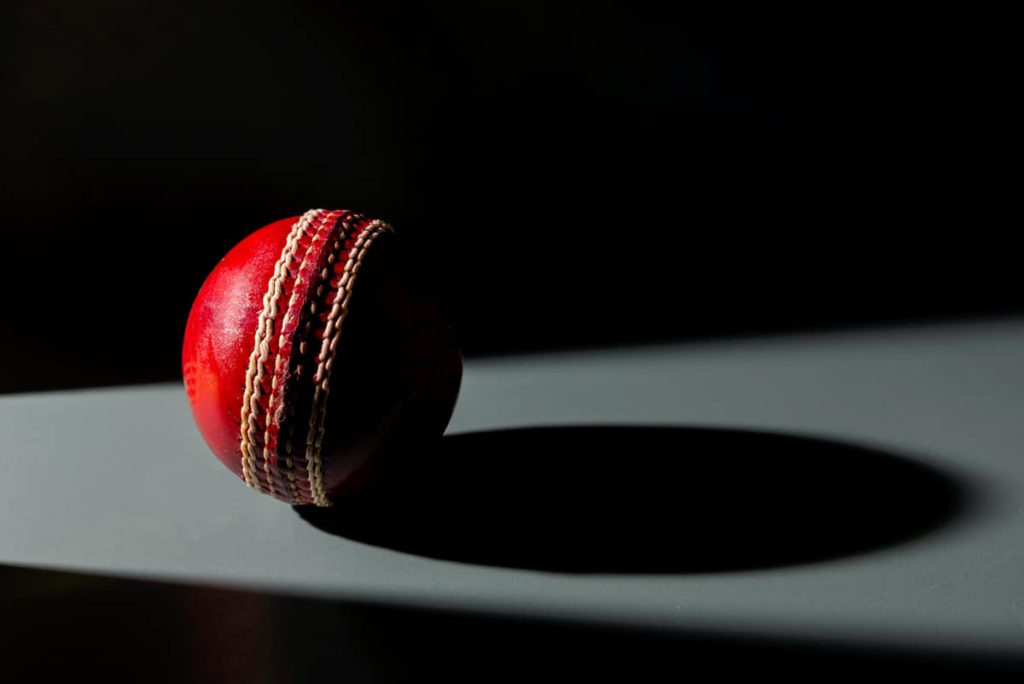Cricket is a popular game, with a wide range of requirements in terms of size, shape, or quality. The right cricket ball should slip off your fingers cleanly yet silently and be able to travel far depending on the bowler’s arm strength. Read this blog article to find out more!

Choosing the best Cricket Ball for yourself
Now that you know the difference between cricket balls, it’s time to choose the best cricket ball for yourself. The first thing you need to consider is what type of cricket you will be playing. If you are playing in a league that requires the use of a red ball, then you will need to purchase a red cricket ball. If you are playing with a white ball, then you have more options. You can choose between a synthetic ball or a leather ball.
If you are just starting out, it is recommended that you purchase a synthetic cricket ball. They are cheaper and easier to maintain than leather balls. Leather balls are better suited for experienced players because they offer more control and spin.
Once you have decided on the material of the ball, it’s time to choose the size. Cricket balls come in three different sizes: 5, 6, and 8. The size of the ball should be based on your height and weight. If you are taller than 6 feet, then you should use an 8-inch cricket ball. If you weigh more than 190 pounds, then you should use a 6-inch cricket ball. Otherwise, a 5-inch cricket ball should be sufficient.
After you have considered all of these factors, it’s time to make your purchase! Be sure to buy from a reputable source so that you can be sure that you are getting a high-quality cricket ball.
Factors to consider when choosing a Ball
There are a few key factors to consider when choosing a cricket ball. Firstly, you need to think about the material the ball is made from. Leather balls are considered the highest quality, but they also come at a higher price point. Second, you need to think about the size of the ball. Cricket balls range in size from 5.5 to 6 ounces. Third, you must consider the hardness of the ball. A harder ball will last longer but may be more difficult to control for some players. Finally, you need to decide what kind of seam you prefer on your ball. Some balls have raised seams, which can help with swing bowling, while others have smooth seams for more control during batting.
Balls suitable for specific Conditions/Competitions
The type of cricket ball you use can have a big impact on your game. Depending on the conditions you’re playing in and the level of competition you’re playing at, different types of balls may be more or less suitable.
If you’re playing in wet conditions, for example, you’ll want to use a ball that won’t get too soggy and heavy. In hot conditions, on the other hand, you’ll want to avoid using a soft ball that will get too bouncy.
Here are some general guidelines for choosing the right cricket ball for specific conditions and competitions:
– For wet conditions: Use a harder ball such as a synthetic ball or a slightly used leather ball. Avoid using softer balls such as new leather balls or training balls.
– For dry conditions: Use any type of ball. Newer balls will be harder and offer less bounce, while older balls will be softer and offer more bounce. Choose whichever type of ball suits your preference and playing style best.
– For hot conditions: Avoid using softer balls such as new leather balls or training balls. These types of balls can get very bouncy in the heat and can be difficult to control. Harder balls such as synthetic balls or slightly used leather balls are better suited for hot conditions.
– For cold conditions: Use any type of ball. Cold weather can make harder balls such as synthetic balls or new leather balls feel dead and lifeless, so if you prefer a bouncier ball you may want to use an older leather ball.
– For hard pitches: Use a harder ball such as a synthetic ball or a new leather ball. Softer balls such as slightly used leather balls or training balls can get damaged easily on hard pitches and may not last as long.
– For soft pitches: Use a softer ball such as a slightly used leather ball or training ball. Harder balls such as synthetic balls or new leather balls can be difficult to control on soft pitches and may not bounce as well.
What Cricket Balls are best for Beginners?
There is no definitive answer to this question as it depends on personal preference. Some beginner cricketers prefer softer balls that are easier to hit, while others prefer harder balls that offer more pace and bounce. Ultimately, it is up to the individual player to experiment with different types of cricket balls to see which one suits their style of play best.
Conclusion
There’s a lot to consider when it comes to choosing the right cricket ball for your game. With so many different materials and construction types available, it can be tough to decide which one is best for you. We hope that this article has given you a better understanding of the different options available and helped you narrow down your choices to find the perfect ball for your game. Do you have any favorite cricket balls? Let us know in the comments below!
